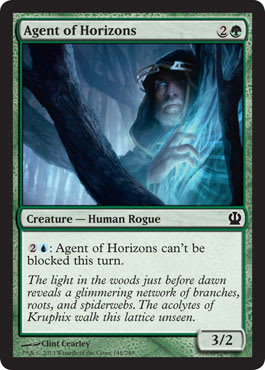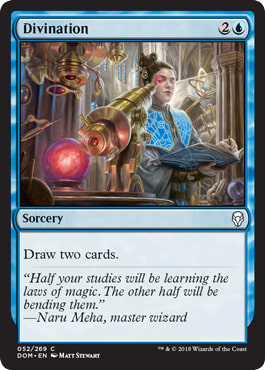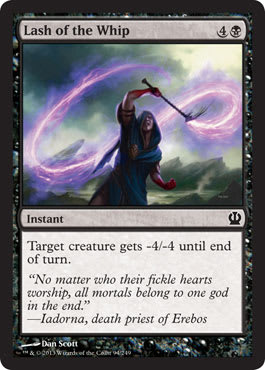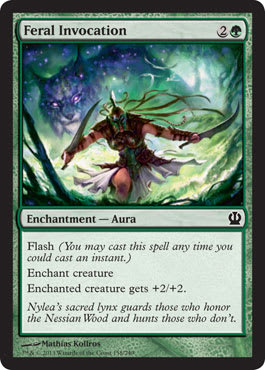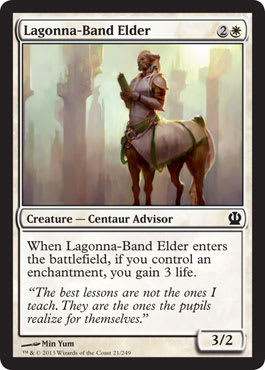
Hello, and welcome to the first installment of Very Limited, GatheringMagic.com’s newest Limited column. In the coming months, this column will explore and discuss Draft and Sealed Deck. Today, we’ll be having a conversation about big-picture Limited strategy.
We often read Limited columns about pick orders, signaling, curves, deck composition, and card advantage, but these concepts are often overstated. We often run into players who are attempting to delve deep into these advanced concepts without a firm grasp of the basics. Let’s take a look at each of these concepts in their rawest forms.
The Basics of Limited Deck Construction
What’s in a Deck?
Before we talk about drafting or playing a game of Limited, it’s important that we understand what we want our Draft or Sealed deck to look like.
We should play forty cards in our deck. This is among the biggest and most detrimental errors I see in many players’ Limited games. Sure, it might be difficult to cut that last card in some situations, but not cutting that card has some serious negative implications.
We play forty cards in an effort to make our deck as consistent as possible. In a perfect world, we want our deck to do the same thing in every game. Increasing the number of cards we’re playing has a negative correlation with consistency.
We want our deck to have a good “mana curve” in its final iteration. This means we want more creatures that cost 2 than 3, more 3-cost than 4-cost, and so on. We want to focus on the curve our deck when we draft, but we shouldn’t be taking cards of drastically different power levels in an effort to pick up enough 2-cost creatures. It’s okay to have more 3-drops than 2-drops, especially if your deck’s power level is particularly high.
Most of us have probably read about mana curves many times before, but there’s a big difference between knowing and understanding this concept. Why do we want our deck to have a mana curve? In the simplest terms, a mana curve makes our deck play similarly in every game. Consistency is important in Magic. Sure, there will be a lot of very strong Limited decks with bad mana curves, but those decks will have more awkward draws and may find themselves being run over by worse decks with better curves.
A good curve allows us to use all of our mana efficiently on every turn. We play a lot of 2-mana creatures so that we have something to do on the second turn when we haven’t seen a lot of cards. We’ll have seen another card by the time we have access to 3 mana; therefore, we need slightly fewer 3-mana cards than 2-mana cards, and so on.
We need to play enough creatures for our deck to make sense. We often see people throw out baseline creature requirements, but we will do no such thing. There is a time and place for our seven-creature deck with three board sweepers and four card-draw spells. The number of creatures we play should be directly correlated with our plan to achieve victory. If our deck has an aggressive game plan and not much in the way of unconditional removal, we want to be playing fourteen or more creatures. If our deck has a bunch of card-draw and a lot of toughness with some big flyers, we can get away with many fewer. If we’re playing any Auras, we don’t want to have fewer than twelve creatures, and we’d prefer to have fourteen or more. The same is true for instant-speed pump spells. We don’t want to be playing pump spells or Auras in a deck with only a few creatures because we may find ourselves without creatures in play while we have a hand filled with dead cards.
We should be playing sixteen to eighteen lands. We should think about the number of lands in our deck in relation to the land drops we need to hit. If we design an aggressive strategy with a fast curve and two or fewer cards that cost 5 or more, playing sixteen lands is probably correct. If our deck is well constructed and we have five or fewer cards that cost 5 or more mana, playing seventeen lands is usually correct. If we happen to draft a bomb-laden monstrosity that plays a lot of expensive spells, we can go ahead and play eighteen lands.
The Basics of Limited Gameplay
When and Why
We should play our spells after combat unless they’re sorcery-speed cards that will positively affect our combat step. We shouldn’t tap all of our lands for our awesome vanilla 5/5 before our combat step—we’re given more options and are giving the opponent more chances to make a mistake or fear of non-existent tricks by waiting until after combat.
Value
Now we understand what our deck should look like, but that’s hardly going to be enough to make us into Limited masters. We can’t play Magic the same way we do in Constructed when we’re drafting or playing Sealed Deck: The range of cards our opponents could have in a given situation is much larger, the speed of the game is decreased dramatically, and we’re given more opportunities to outplay our opponents.
Understanding value and the trade economy in Magic is the most important knowledge one can attain to improve one’s Limited game. We should always be assessing the potential value of our cards in a given situation. There are games in which our opponent comes out of the gate quickly and we’re forced to trade our spells with the opponent’s as aggressively as we can. Most games, however, we’ll be developing on pace with our opponent, and the board will become complex enough that we can start making the kinds of plays that separate the good players from the great players.
Card advantage is the overarching strategy that involves trading cards for more cards. An obvious example is a card that says, “Draw two cards.” We use this card and trade one card for two cards. That’s a splendid deal, and I usually play 3-mana draw-twos, but we need to spend 3 mana to be up one card, and we haven’t affected the board at all. The type of card advantage that really wins games is much less obvious.
Tricks of the Trade
Using Our Instant-Speed Removal to Its Fullest Potential
It’s important to take efficient instant-speed removal (the kind of removal that usually cost less than the creature it’s killing) above basically anything that isn’t a very high-quality uncommon, rare, mythic, or card that’s especially synergistic with our deck when we’re drafting. Why do we take removal so high? Removal gives us outs to powerful interactions, aggressive starts, and bombs. Most importantly, removal gives us an opportunity to achieve real and tangible card advantage that actually affects the board, often in devastating fashion. Let’s discuss how our instant-speed removal can be used to accrue card advantage.
Sometimes, we’re on the other end of the aggressive start, and we’re forced to use our removal early in an effort to stay alive and stave off a gangbusters start from the opponent.
A lot of Limited games involve stalled/cluttered battlefields. In these situations, it’s wise to hold our removal until it has the potential to massively swing the game in our favor. If our opponent has a big creature he or she isn’t attacking with, we shouldn’t just be firing off our removal spell at it unless that would give us a very good attack. Clearly, there are cards that player wants to draw something to make his or her attack more profitable. By sandbagging our removal spell, we set ourselves up to deal with two of our opponent’s most important cards by only using a single spell.
Try making big plays with your removal when your opponent spends all or most of his or her mana. It’s not fun when we set up a blowout and things end up going the other way. We can minimize these chances by making plays that bait the cards that might positively interact with our removal.
Risk/Reward and Instant-Speed Pump Spells
Instant-speed pump spells have tremendous value in the most aggressive Limited decks, but the value of these cards steadily decreases in correlation with how controlling a deck is. These cards can be used as removal spells, counterspells, and finishing blows when used correctly, but we assume a big risk if we aren’t careful with these cards. Good instant-speed pump spells are usually pretty easy for a white or green drafter to pick up late. We often see many drafters taking instant-speed pump spells over good or on-curve creatures that would make their decks every time. We can take efficient instant-speed removal and bombs over everything, but we want to be prioritizing our deck’s mana curve over picking up pump spells because pump spells are weak in decks with bad curves.
Why is an instant-speed pump spell’s power correlated with the efficiency of a deck’s mana curve? Our opponent will find himself forced to make seemingly-favorable blocks into our pump spells if we’re the one applying pressure. This is tremendously important with instant-speed pump spells because it makes our opponent block when all of his mana is spent. Casting instant-speed pump into an opponent with available mana is a dangerous proposition that gives our opponent a chance to accrue valuable tempo and card advantage.
When both players have pump spells, things usually favor the player who acts second. We can control which player will be forced to play his or her pump spell first by declining to block until we’re given an opportunity to leave open our pump spell without disrupting our draw’s mana curve. On this fateful turn, we’ll make our best block with our best creature and get a pump spell out of our opponent’s hand and a creature off his or her side of the board all for the low price of a single pump spell.
Against red players, we can use our pump spells to a tremendous advantage in conjunction with our larger creatures. In Limited, red decks are often forced to two-for-one (give up two cards for one card) themselves to deal with big creatures in many situations. Coupling a pump spell with our cleanup end-boss will almost always assure victory if we aren’t already being run over. We can make a block and then use the pump spell to save our guy when the opponent tries to finish it off with a burn spell, effectively trading one card for two more powerful cards.
It’s important that we assess our surroundings before casting a pump spell into an opponent with open mana and cards in hand. A lot of Magic players wear their hearts on their sleeves; it’s usually easy to see when a player has a pump spell of his or her own, an instant-speed removal spell, or some other type of trick. We can also narrow down which cards the opponent could have based on the lands he or she is leaving untapped and then specifically play around those cards or the cards we believe our opponents have for whatever subjective reason. This becomes easier to do in the second and third games of a match because we’ve seen a larger portion of our opponent’s deck and can specifically play around cards we’ve already seen, especially if we had a particularly long previous game.
The presence of instant-speed pump gives us and our opponents an opportunity to bluff points of damage that might otherwise be missed. It’s important to pick our spots with bluffs. We can easily attack our 2/2 into our opponent’s 4/4 if her life total is healthy and she has all her mana spent, but that same attack becomes a suicide mission if our opponent’s life total is dwindling or we’ve shown her a reasonable number of burn spells. Also—and this is extremely important—we should never bluff an opponent who can’t be bluffed. (If we feel that our opponent is the type of player who doesn’t think about combat tricks, a player who makes blocks solely based on the shown board, we should never make “bad” attacks without the goods to back them up.)
Assessing Card Power
Choosing which cards to play in our deck is a hurdle in Limited skill level. Bluntly, understanding how we can assess the power level of a card is difficult, but it’s something we only need to learn once.
Bomb rares are a real thing in Limited, but a card isn’t a “bomb” if it’s just a big turd that costs a lot of mana and has big numbers on the bottom. Envision the rare 6- or 7-cost spell in actual gameplay and ask yourself how likely it is that this card can win the game by itself. If it’s even somewhat likely, the card is probably an expensive bomb that’s worth spending an early pick on in a Draft or splashing for in Sealed Deck.
Efficient instant-speed removal (Instant removal that usually kills a creature that costs more mana than the removal spell) should be taken very high when it’s available in a Draft and should always be played when it’s on-color in Sealed Deck. We’ll come back to why these are important in our Limited decks.
Efficiently-costed and on-curve creatures should make up the majority of our picks. We can’t be afraid to play some 3/2s for 3 mana or some 2/4s for 4 mana. This is Limited—we don’t have the luxury of having a bunch of perfect guys for our deck. We often see newer Limited players playing/picking mediocre spells over middle-of-the-road creatures. As we progress our Limited game, we’ll almost always be taking the creatures when there’s a close decision, as it gives us the highest chance of ending up with a consistent strategy.
We shouldn’t play bad spells. We don’t want a card that says, “Gain X life,” with no other text in our deck. All of our cards should have the ability to trade for cards of the opponent’s or accrue multiple cards of our own. Following this simple rule will drastically improve the average player’s Limited success. (There are exceptions to this rule, but only in very specific scenarios.)
Into Action!
We’ve learned a lot about Limited today. We should all make a concerted effort to go out and play some Limited in the coming week to put our newfound knowledge to the test.
Wow. Much Strategy. Very Limited. So Draft. Such Sealed Deck.













